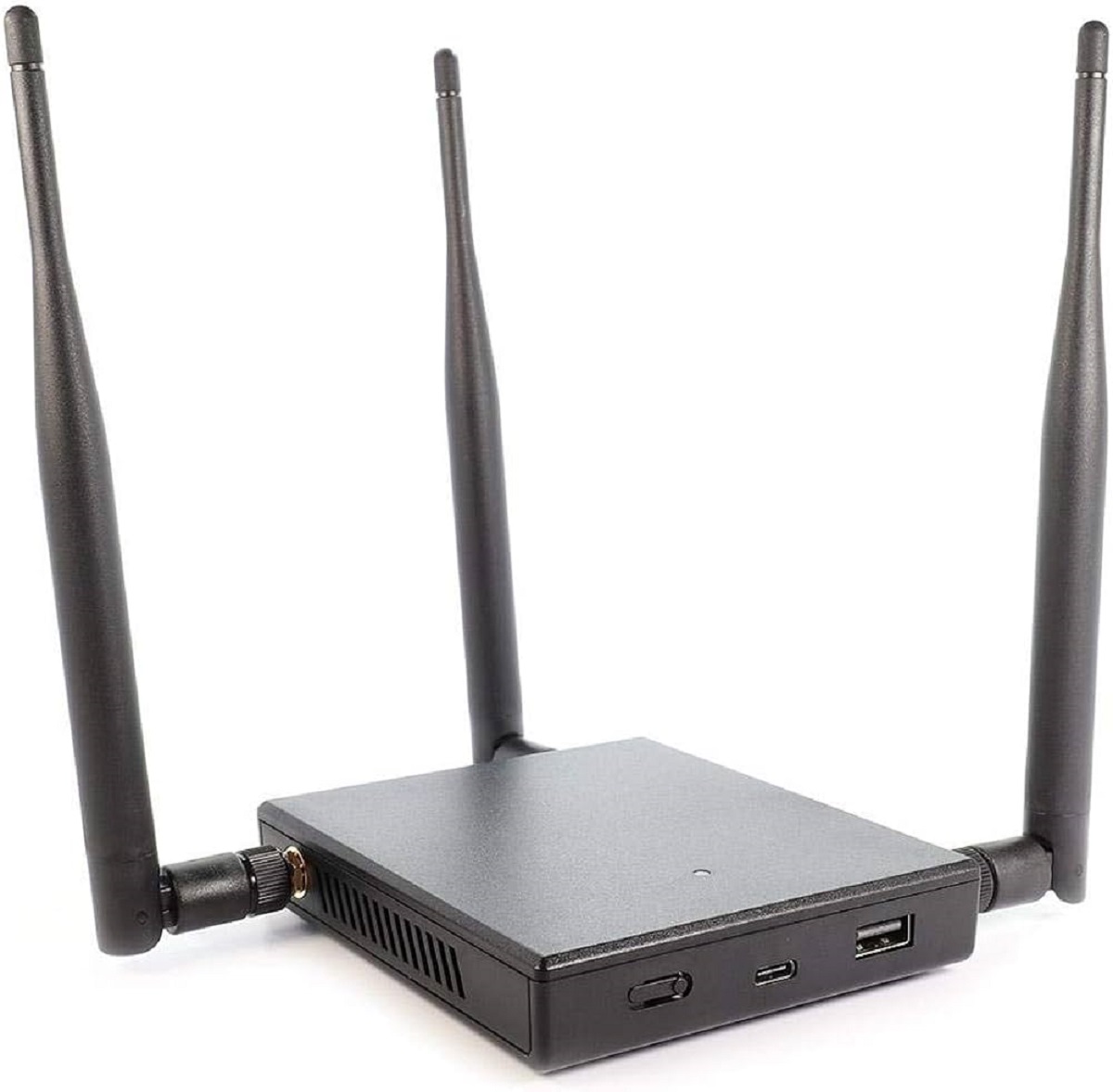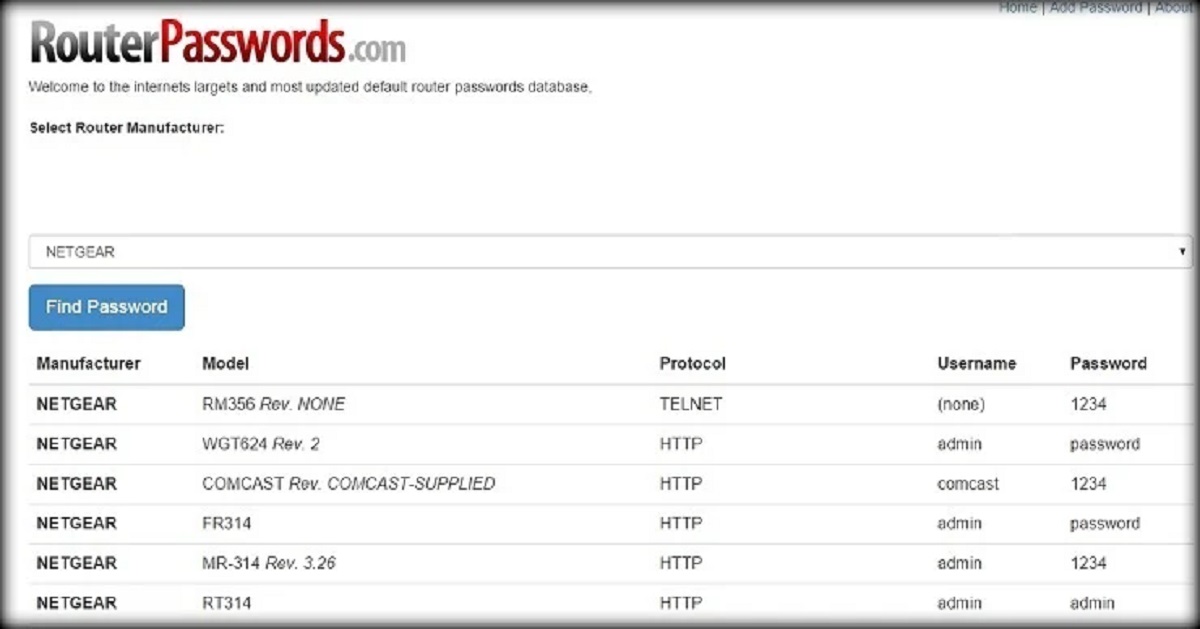Introduction
Welcome to the world of advanced cybersecurity threats, where malicious actors are constantly finding innovative ways to exploit vulnerabilities. One such threat that has gained attention in recent years is the notorious WiFi Pineapple. In this article, we will explore what a WiFi Pineapple is, how it works, its functionality, use cases, and the potential risks and ethical considerations associated with it.
The WiFi Pineapple is not a literal pineapple, but rather a powerful hacking tool used to intercept and manipulate Wi-Fi network traffic. Developed by security researcher Darren Kitchen, this device is designed to highlight the weaknesses in wireless networks, expose potential security flaws, and raise awareness about the importance of securing one’s Wi-Fi connection.
At its core, the WiFi Pineapple is a small, portable device that acts as a wireless access point. It is capable of mimicking legitimate Wi-Fi networks to trick nearby devices into connecting to it. Once connected, the WiFi Pineapple can intercept and inspect all network traffic passing through it, giving the attacker complete control over the data.
The WiFi Pineapple takes advantage of a vulnerability known as a “man-in-the-middle” attack. By positioning itself between the targeted device and the legitimate Wi-Fi network it intends to connect to, the device can intercept and even modify the data being transmitted. This includes capturing sensitive information like login credentials, financial details, and personal data.
The functionality of a WiFi Pineapple goes beyond just intercepting data; it also enables various advanced hacking techniques. For example, it can perform DNS spoofing, where it redirects users to malicious websites by falsifying DNS responses. It can also carry out de-authentication attacks, effectively disconnecting targeted devices from their legitimate Wi-Fi networks and forcing them to connect to the WiFi Pineapple.
While the WiFi Pineapple was initially developed for cybersecurity professionals and researchers to test the security of their own networks, it has unfortunately found a place in the arsenals of malicious hackers. Its ease of use, portability, and its ability to exploit the trust people place in Wi-Fi networks make it a popular choice among cybercriminals.
What is a WiFi Pineapple?
A WiFi Pineapple is a powerful hacking tool that is used to exploit wireless networks and intercept network traffic. It is not an actual pineapple, but rather a compact device developed by Darren Kitchen, a well-known security researcher. The main purpose of the WiFi Pineapple is to identify potential vulnerabilities and raise awareness about the importance of securing Wi-Fi connections.
At its core, the WiFi Pineapple is designed to mimic legitimate Wi-Fi networks. It creates a rogue access point that appears to be a trusted network, luring nearby devices to connect to it. Once a device connects to the WiFi Pineapple, the attacker gains full control over the network traffic passing through the device.
The WiFi Pineapple takes advantage of a hacking technique known as a “man-in-the-middle” attack. By positioning itself between the targeted device and the intended Wi-Fi network, the device can intercept, monitor, and even modify the data being transmitted. This means that sensitive information, such as passwords, credit card details, and personal data, can be captured by the attacker without the user’s knowledge.
In addition to intercepting and inspecting network traffic, the WiFi Pineapple provides advanced hacking functionalities. It can perform DNS spoofing, which involves redirecting users to malicious websites by falsifying DNS responses. This allows attackers to trick users into visiting fake websites that appear legitimate, potentially leading to the theft of sensitive information.
One of the notable features of the WiFi Pineapple is its ability to carry out de-authentication attacks. This involves disconnecting targeted devices from their legitimate Wi-Fi networks and forcing them to connect to the WiFi Pineapple. By doing so, the attacker can gain further control over the device and manipulate its network traffic.
While the WiFi Pineapple was initially developed for security professionals to assess the vulnerabilities of their own networks, it has unfortunately been misused by malicious hackers. Its compact size, ease of use, and effectiveness in exploiting the trust placed in Wi-Fi networks have made it a popular choice among cybercriminals.
It is crucial to be aware of the existence of such hacking tools and take the necessary precautions to protect against WiFi Pineapple attacks. Understanding how the WiFi Pineapple operates and the risks associated with it is the first step towards securing your wireless network and safeguarding your sensitive information.
How does it work?
The WiFi Pineapple operates by taking advantage of vulnerabilities in Wi-Fi networks and utilizing a variety of hacking techniques. Here’s a breakdown of how it works:
1. Rogue Access Point: The WiFi Pineapple creates a rogue access point that appears to be a legitimate Wi-Fi network. It mimics the name (SSID) of a trusted network that nearby devices have previously connected to, tricking them into automatically connecting.
2. Capturing Network Traffic: Once a device connects to the rogue WiFi Pineapple network, it intercepts and captures all the network traffic passing through it. This includes unencrypted data, such as websites visited, emails, and messages.
3. Man-in-the-Middle Attack: The WiFi Pineapple positions itself between the targeted device and the intended Wi-Fi network. It effectively becomes the “man in the middle” and captures all the data transmitted between the device and the network.
4. Traffic Inspection and Modification: With complete visibility of the network traffic, the attacker can inspect, analyze, and even modify the data being transmitted. This allows them to capture sensitive information, inject malware into webpages, or redirect users to malicious websites.
5. DNS Spoofing: The WiFi Pineapple can perform a DNS spoofing attack, where it falsifies DNS responses sent to the connected device. By redirecting the device to a fake website that appears legitimate, the attacker can capture login credentials or other sensitive information.
6. De-Authentication Attacks: In addition to intercepting data, the WiFi Pineapple can initiate de-authentication attacks. It sends de-authentication packets to targeted devices, disconnecting them from their legitimate Wi-Fi network. The devices then automatically connect to the rogue Pineapple network, giving the attacker full control over their network traffic.
It is important to note that the WiFi Pineapple itself does not exploit any specific vulnerabilities in devices or networks. Instead, it leverages the trust individuals place in Wi-Fi networks and the lack of proper security measures to carry out its attacks.
While the WiFi Pineapple was initially developed for ethical hacking purposes, its accessibility and potential for misuse have made it a concern for network security. It is essential for individuals and organizations to implement robust security measures, including using strong encryption protocols, regularly updating firmware, and being vigilant of suspicious Wi-Fi networks, to protect themselves against WiFi Pineapple attacks.
The functionality of a WiFi Pineapple
The WiFi Pineapple offers a range of powerful and versatile functionalities that make it a preferred tool for hackers. Here are some of its key features:
1. Rogue Access Point (AP) Mode: The WiFi Pineapple can act as a rogue AP, creating a fake Wi-Fi network with a similar name or SSID as a legitimate network. This enables it to attract nearby devices to connect and pass their network traffic through the Pineapple.
2. Beaconing: The WiFi Pineapple continuously broadcasts beacon frames, making it appear as a trusted Wi-Fi network. This helps to lure unsuspecting devices to connect to it automatically.
3. Intelligent Packet Capture: The WiFi Pineapple captures network packets from both connected devices and nearby Wi-Fi signals. This allows the attacker to analyze the data and extract valuable information.
4. Traffic Analysis: The intercepted data can be examined to identify potential security vulnerabilities and weaknesses in the targeted network. This information can then be used to exploit the network further.
5. DNS Spoofing: Using its DNS spoofing capabilities, the WiFi Pineapple can intercept DNS requests made by connected devices and redirect them to malicious websites controlled by the attacker. This facilitates phishing attacks and credential stealing.
6. Karma Attack: The WiFi Pineapple can clone legitimate Wi-Fi networks and trick devices into connecting to them. This technique, known as a Karma attack, capitalizes on the devices’ tendency to automatically connect to previously known networks.
7. PineAP Suite: The PineAP suite is a powerful collection of tools available on the WiFi Pineapple. It includes functions such as PineAP Daemon, PineAP Karma, and PineAP Daemon, each serving a specific purpose in exploiting Wi-Fi vulnerabilities.
8. Advanced Exploitation Modules: The WiFi Pineapple supports additional modules that can be installed to enhance its capabilities. These modules offer features such as wireless network scanning, advanced packet manipulation, and user-friendly web interfaces.
9. Easy Configuration and Control: The WiFi Pineapple offers a user-friendly web interface that allows attackers to configure and control its functionality easily. This makes it accessible even to those with limited technical expertise.
The WiFi Pineapple’s wide range of functionality and flexibility make it a potent tool for conducting wireless network attacks. While it was initially developed for ethical purposes, its availability and potential for misuse necessitate heightened awareness and security measures for Wi-Fi users.
It is important for individuals and organizations to stay informed about WiFi Pineapple attacks and take necessary precautions to protect their Wi-Fi networks. Regularly updating firmware, using strong encryption protocols, and being cautious of connecting to unknown networks are essential steps to mitigate the risks associated with the WiFi Pineapple and similar hacking tools.
Use cases of a WiFi Pineapple
The WiFi Pineapple, with its capabilities to intercept and manipulate Wi-Fi network traffic, presents various use cases for both ethical and unethical purposes. Here are some common scenarios where the WiFi Pineapple is utilized:
1. Penetration Testing and Security Audits: Ethical hackers and security professionals use the WiFi Pineapple as a tool to assess the vulnerabilities and security weaknesses of wireless networks. By simulating real-world attacks, they can identify potential entry points and provide recommendations for improving network security.
2. Educational Purposes: The WiFi Pineapple is often used in cybersecurity training programs to demonstrate the risks associated with Wi-Fi networks. By showing firsthand how easy it is for an attacker to intercept and manipulate network traffic, it raises awareness among students and encourages them to implement proper security measures.
3. Public Wi-Fi Hotspot Security Analysis: Public Wi-Fi networks, such as those found in coffee shops or airports, are often targeted by attackers. The WiFi Pineapple enables security professionals to evaluate the security posture of these networks by analyzing the network traffic and identifying potential security flaws.
4. Wireless Network Auditing: Organizations and businesses may engage ethical hackers or security consultants to conduct wireless network audits. The WiFi Pineapple can be employed as a part of this process to identify and address vulnerabilities in their Wi-Fi infrastructure, ensuring that sensitive data remains protected.
5. Testing Wi-Fi Client Devices: The WiFi Pineapple can be used to test the security of Wi-Fi client devices, such as smartphones, laptops, and IoT devices. By analyzing the behavior of these devices when connected to a rogue network, security professionals can assess their susceptibility to various attacks and recommend necessary updates or configurations.
6. Malicious Attacks: Unfortunately, the WiFi Pineapple can also be misused for malicious purposes. Hackers may deploy it in areas with high foot traffic to collect sensitive data like login credentials, financial information, or personal data from unwitting victims. They can then misuse this information for identity theft, fraud, or other illicit activities.
It is important to note that using the WiFi Pineapple for malicious purposes is illegal and unethical. Such actions can lead to severe legal consequences. It is crucial for individuals and organizations to use the tool responsibly and only within the bounds of legal and ethical frameworks.
By understanding the potential use cases of the WiFi Pineapple, individuals and organizations can better protect themselves from potential attacks and take necessary measures to secure their Wi-Fi networks.
Potential risks and ethical considerations
The use of a WiFi Pineapple, whether for ethical hacking or malicious purposes, poses several risks and raises important ethical considerations. Let’s explore some of the potential risks and ethical implications associated with this powerful hacking tool:
1. Privacy Invasion: The WiFi Pineapple can compromise the privacy of individuals by intercepting and capturing their network traffic. This includes sensitive information such as login credentials, personal messages, and financial details. Engaging in such activities without proper authorization constitutes a violation of privacy rights.
2. Data Breach: The interception and manipulation of network traffic facilitated by the WiFi Pineapple can lead to data breaches. Attackers can gain access to confidential information, which can have severe consequences for individuals, businesses, and organizations. This breach of data can result in financial loss, reputational damage, and legal ramifications.
3. Legal Implications: The misuse of a WiFi Pineapple for unauthorized activities is illegal in most jurisdictions. Engaging in activities such as unauthorized access to networks, intercepting private communications, and stealing sensitive information can result in criminal charges and severe legal consequences.
4. Ethical Boundaries: The use of a WiFi Pineapple raises ethical considerations in terms of permission, consent, and the responsibility of hacking tools. Ethical hackers must obtain appropriate consent from organizations or individuals before conducting security audits. Using this tool without consent or for malicious purposes violates ethical boundaries and can harm innocent individuals or organizations.
5. Trust and Security Implications: WiFi Pineapple attacks can erode trust in Wi-Fi networks. When individuals become aware that their personal data is at risk of interception, they may be less inclined to trust public networks or even Wi-Fi networks in their homes or workplaces. This highlights the importance of ensuring proper security measures and educating users about the risks associated with using Wi-Fi networks.
6. Impact on Wi-Fi Infrastructure: Large-scale deployment of WiFi Pineapples can strain Wi-Fi networks, leading to degraded performance and connectivity issues for legitimate users. This has implications for businesses, organizations, and individuals who rely on Wi-Fi networks for their daily operations.
To mitigate these risks and adhere to ethical principles, it is essential to use the WiFi Pineapple responsibly and within the bounds of legal frameworks. Ethical hackers should always obtain proper authorization and consent before conducting security audits. Additionally, organizations and individuals should prioritize implementing robust security measures to protect their networks from potential attacks, thus minimizing the risks associated with the WiFi Pineapple.
The responsible and ethical use of hacking tools, like the WiFi Pineapple, ensures the protection of privacy, reinforces trust in Wi-Fi networks, and fosters a more secure digital environment for everyone.
How to protect yourself from WiFi Pineapple attacks
Given the potential risks associated with WiFi Pineapple attacks, it is crucial to take proactive steps to protect yourself and your Wi-Fi network. Here are some measures you can implement to safeguard against such attacks:
1. Connect to Trusted Wi-Fi Networks: Only connect to Wi-Fi networks that you trust and are familiar with. Avoid connecting to unfamiliar or suspicious networks, as they may be potential targets for WiFi Pineapple attacks.
2. Verify Network Authenticity: Before connecting to a Wi-Fi network, verify its authenticity. Cross-check the network name (SSID) with other reliable sources, such as official sources or directly with the network administrator, to ensure you are connecting to the legitimate network.
3. Use Secure Encryption: Ensure that your Wi-Fi network is secured with strong encryption protocols, such as WPA2 or WPA3. These encryption standards make it significantly more difficult for attackers to intercept and manipulate network traffic.
4. Enable Network Monitoring: Regularly monitor your Wi-Fi network for any suspicious activity. Keep an eye out for unknown devices connected to your network and consider employing network monitoring tools or intrusion detection systems to detect anomalies in real-time.
5. Keep Software Up to Date: Regularly update the firmware and software of your Wi-Fi router and connected devices. Manufacturers often release security patches and updates to address vulnerabilities, so it is essential to install these updates promptly.
6. Disable Automatic Wi-Fi Connections: Turn off the automatic connection feature on your devices. This prevents them from connecting automatically to any available Wi-Fi network, reducing the risk of unknowingly connecting to a rogue network.
7. Use a Virtual Private Network (VPN): A VPN encrypts your internet traffic, providing an additional layer of security when using public Wi-Fi networks. It helps protect your data from being intercepted and can prevent WiFi Pineapple attacks from accessing sensitive information.
8. Use Two-Factor Authentication (2FA): Enable two-factor authentication for your online accounts whenever possible. This adds an extra layer of protection by requiring an additional verification step, making it more difficult for attackers to gain unauthorized access to your accounts.
9. Stay Informed: Stay up to date with the latest news and developments in the field of cybersecurity. This will help you stay informed about emerging threats, including WiFi Pineapple attacks, and take appropriate measures to protect yourself.
By implementing these proactive measures, you can significantly reduce the risk of falling victim to WiFi Pineapple attacks. Remember to stay vigilant and prioritize the security of your Wi-Fi network and your personal data.
Conclusion
The WiFi Pineapple is a powerful hacking tool that brings to light the vulnerabilities and security risks associated with Wi-Fi networks. While it was initially developed for ethical hacking purposes, its accessibility and potential for misuse have raised concerns in the cybersecurity community.
In this article, we explored what a WiFi Pineapple is, how it works, its functionality, use cases, and the potential risks and ethical considerations associated with it.
Understanding the capabilities of the WiFi Pineapple is essential to protect oneself from potential attacks. By following best practices such as connecting to trusted networks, verifying network authenticity, using secure encryption, and keeping software up to date, individuals and organizations can enhance their Wi-Fi network security.
It is vital to remain vigilant and take proactive measures to protect against WiFi Pineapple attacks. Constantly monitoring your network, disabling automatic Wi-Fi connections, utilizing VPNs, and enabling two-factor authentication are effective steps to bolster your defenses.
Ultimately, responsible and ethical use of hacking tools like the WiFi Pineapple is of utmost importance. Adhering to legal frameworks and obtaining proper authorization ensures the protection of privacy rights and promotes a secure digital environment for all.
By staying informed, implementing necessary security measures, and fostering a culture of cybersecurity awareness, we can mitigate the risks associated with WiFi Pineapple attacks and safeguard ourselves against potential threats.

























